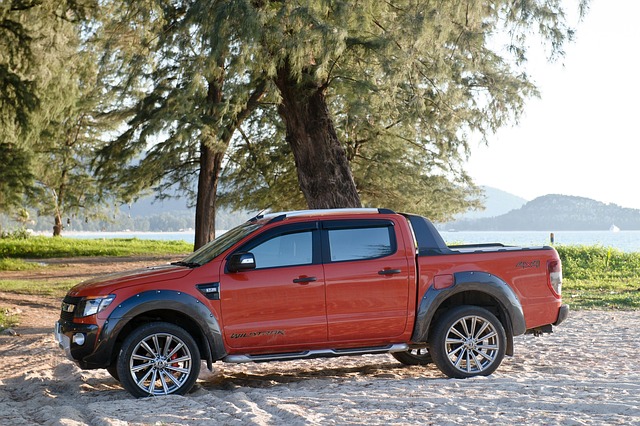Learn how to register your car in California with our step-by-step guide. This comprehensive process ensures you meet all state requirements, from understanding crucial registration specifics to completing a successful DMV VIN verification. First, gather essential documents like proof of ownership and insurance. Then, visit the DMV to verify your vehicle’s unique identification number (VIN). Once verified, fill out the application, pay fees, and receive your official California vehicle registration documents.
- Understand California Car Registration Requirements
- Gather Necessary Documents for DMV Visit
- Perform VIN Verification at DMV
- Complete Application and Pay Fees
- Receive Your Vehicle Registration Documents
Understand California Car Registration Requirements

Before registering your car in California, it’s essential to understand the state’s specific requirements. The California Department of Motor Vehicles (DMV) mandates several crucial steps for new and existing vehicle owners alike. One critical aspect is the DMV vin verification process, which ensures that your vehicle meets safety and pollution standards. This involves checking the Vehicle Identification Number (VIN), a unique code etched into every car, to confirm its authenticity and history.
Additionally, California requires proof of insurance, current emissions testing (for most vehicles), and title documentation. You can complete these tasks at a local DMV office or opt for convenient alternatives like mobile vin verification services that offer inspections on-site or remotely through specialized mobile vin inspectors. These services streamline the process by providing accurate VIN checks and necessary paperwork, making car registration in California more efficient.
Gather Necessary Documents for DMV Visit

Before heading to the DMV, it’s crucial to gather all necessary documents for a smooth car registration process. This includes your vehicle’s registration certificate from the previous state (if applicable), proof of insurance, and a valid driver’s license. Additionally, you’ll need the Vehicle Identification Number (VIN) verification report, which can be obtained through a mobile vin verifier or by conducting a vin inspection. This step is essential for the DMV to confirm your vehicle’s authenticity.
Ensure all documents are up-to-date and accurate. Incorrect or missing information may cause delays in the registration process. Remember to bring along any required fees for registration and title transfer, as these can be paid at the DMV. By being prepared with these essentials, you’ll make your visit more efficient, avoiding potential backlogs during the dmv vin verification process.
Perform VIN Verification at DMV

Before registering your car in California, it’s crucial to perform a Vehicle Identification Number (VIN) Verification at the Department of Motor Vehicles (DMV). This process is essential for ensuring that the vehicle matches the information provided on the registration documents and preventing fraud. The DMV offers both in-person and mobile VIN inspection services. If you opt for a mobile vin verification, a qualified inspector will come to your location to complete the check, saving you time and effort.
During the VIN inspection, an inspector will cross-reference the vehicle’s unique VIN with their database to confirm its identity, history, and current status. This includes verifying the make, model, year, and other critical details. Once the inspection is complete, the inspector will provide you with a report that can help streamline the registration process at your local DMV office.
Complete Application and Pay Fees

To register your car in California, the first step is to complete the Application for Title and Registration (Form DV-140). This form requires detailed information about your vehicle, including its make, model, year, and unique Vehicle Identification Number (VIN). Alongside this application, you’ll need to provide proof of insurance and pay the necessary fees. The California Department of Motor Vehicles (DMV) offers various payment methods for your convenience.
Once your application is complete and fees are paid, it’s time for the DMV’s vin verification process. This involves a thorough check of the VIN to ensure its authenticity and match with the vehicle’s characteristics. You can streamline this step by utilizing a mobile vin inspection or hiring a mobile vin verifier service, which allows for on-site verification, saving you time and effort.
Receive Your Vehicle Registration Documents

After submitting your application, it’s time to receive your car’s registration documents. The California Department of Motor Vehicles (DMV) will review your request and, if approved, will send you a certificate of registration along with a vehicle identification number (VIN) verification label. This label is crucial as it confirms the authenticity of your vehicle’s VIN, which is essential for future reference and transactions.
One efficient way to ensure a smooth process is through mobile VIN verification services. These services allow for a quick and convenient inspection of your vehicle’s details, including its history and current status. A mobile vin verifier can save you time by providing immediate access to these critical data points, making it easier to complete the registration process.
Registering a car in California involves understanding specific requirements, gathering essential documents, and completing key steps like DMV VIN verification. Once your application is approved, you’ll receive your vehicle registration documents, ensuring legal operation on California roads. Always remember to stay organized, be prepared with necessary paperwork, and follow the guidelines provided by the Department of Motor Vehicles (DMV) for a smooth registration process.
